From the high mountain peaks in the north and west to the high plains in the east, and the Chiwawen desert in the south, ‘The Land of Enchantment’ has a broad range of habitats that make this rather arid state an oasis for sparrows.
Although sparrows are sometimes dismissed as ‘little brown jobs’, closer inspection reveals a diverse and fascinating family of birds, each with its own distinct song, plumage, and behavior.
It can be great fun identifying a wide variety of sparrows by sight, whether through your binoculars in the desert or through your bedroom window in your backyard, and they are regular guests at backyard bird feeders and bird baths.
There are more than 30 species of sparrows that live in or pass through New Mexico, although some of them are seldom seen.
Here, we’re going to have a closer look at 20 of the most common sparrow species in the state to find out where they live, what they look like, and how you can spot them. Let’s get started!
20 Sparrow Species in New Mexico – Starting With the Most Common
Dark-eyed Junco
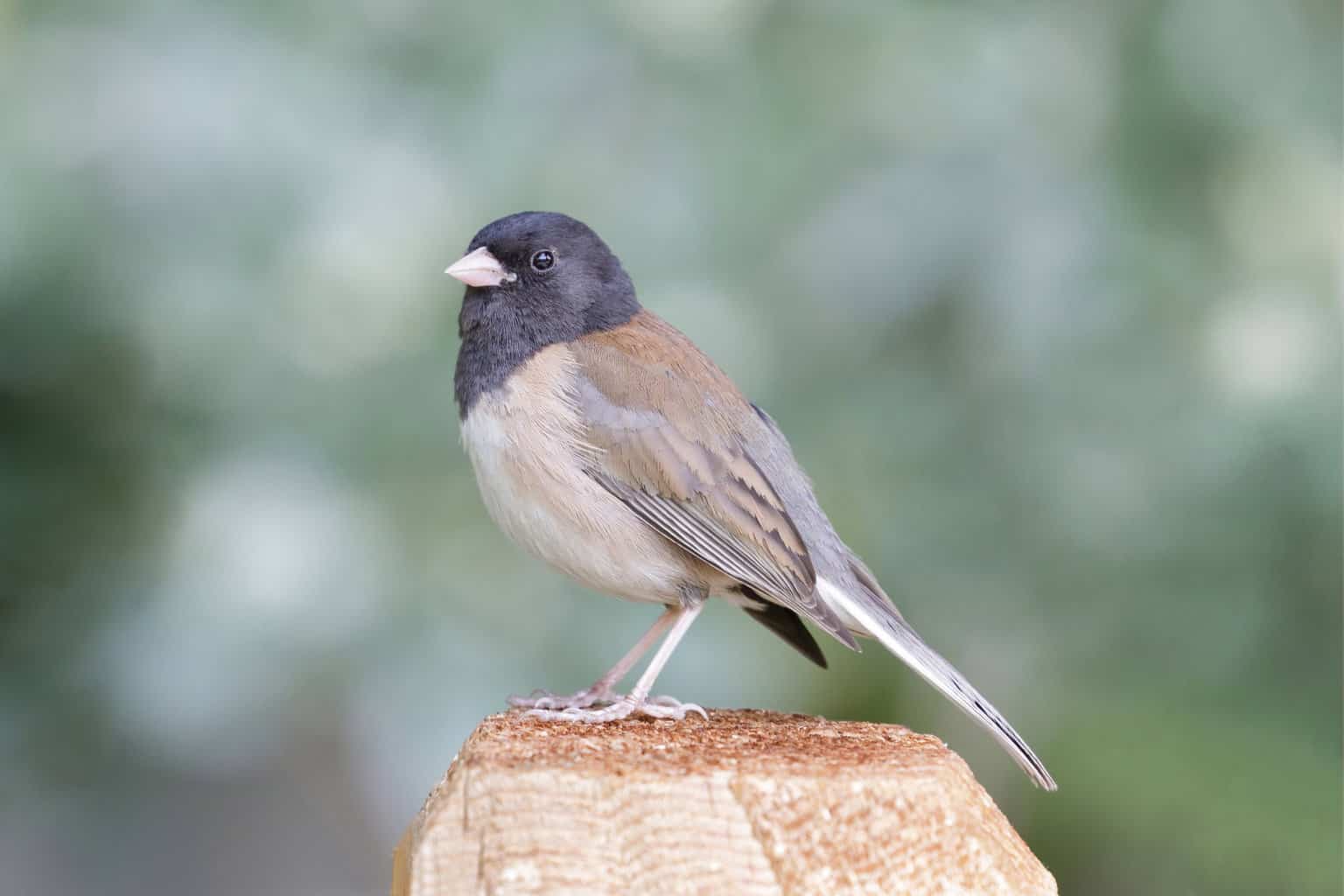
- Scientific Name: Junco hyemalis
- Length: 5.5-6.3 in (14-16 cm)
- Weight: 0.6-1.1 oz (18-30 g)
- Wingspan: 7.1-9.8 in (18-25 cm)
In winter, the skies of New Mexico are alive with dark-eyed juncos! The sunny climate of this southern state is likely to be one of the factors that makes this a favorite over-wintering ground for these widespread birds.
A few dark-eyed juncos also remain in New Mexico to breed, but the vast majority prefer to nest in the Northern United States, Canada, and Alaska.
These medium-large sparrows are common visitors to backyard bird feeders and will enjoy eating seeds such as millet, cracked corn, and peanuts.
Spotted Towhee
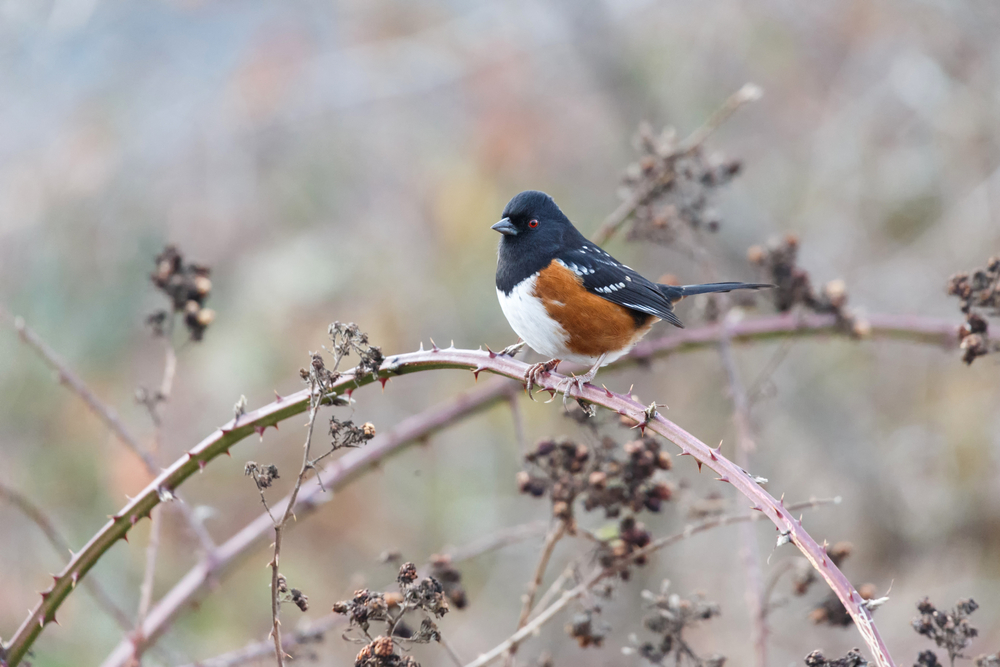
- Scientific Name: Pipilo maculatus
- Length: 6.7-8.3 in (17-21 cm)
- Weight: 1.2-1.7 oz (33-49 g)
- Wingspan: 11.0 in (28 cm)
Residents of New Mexico are lucky enough to regularly see the beautiful spotted towhee year round.
With their black head, red eyes, white chest, rusty red sides, and white spots on their wings, this striking bird is unique in New Mexico, but shouldn’t be confused with its cousin the eastern towhee of the southeastern United States.
As one of the larger sparrows, spotted towhees like to scratch around in the undergrowth in search of food items as large as acorns and can be attracted to backyard feeders by offering them a selection of seeds.
White-crowned Sparrow
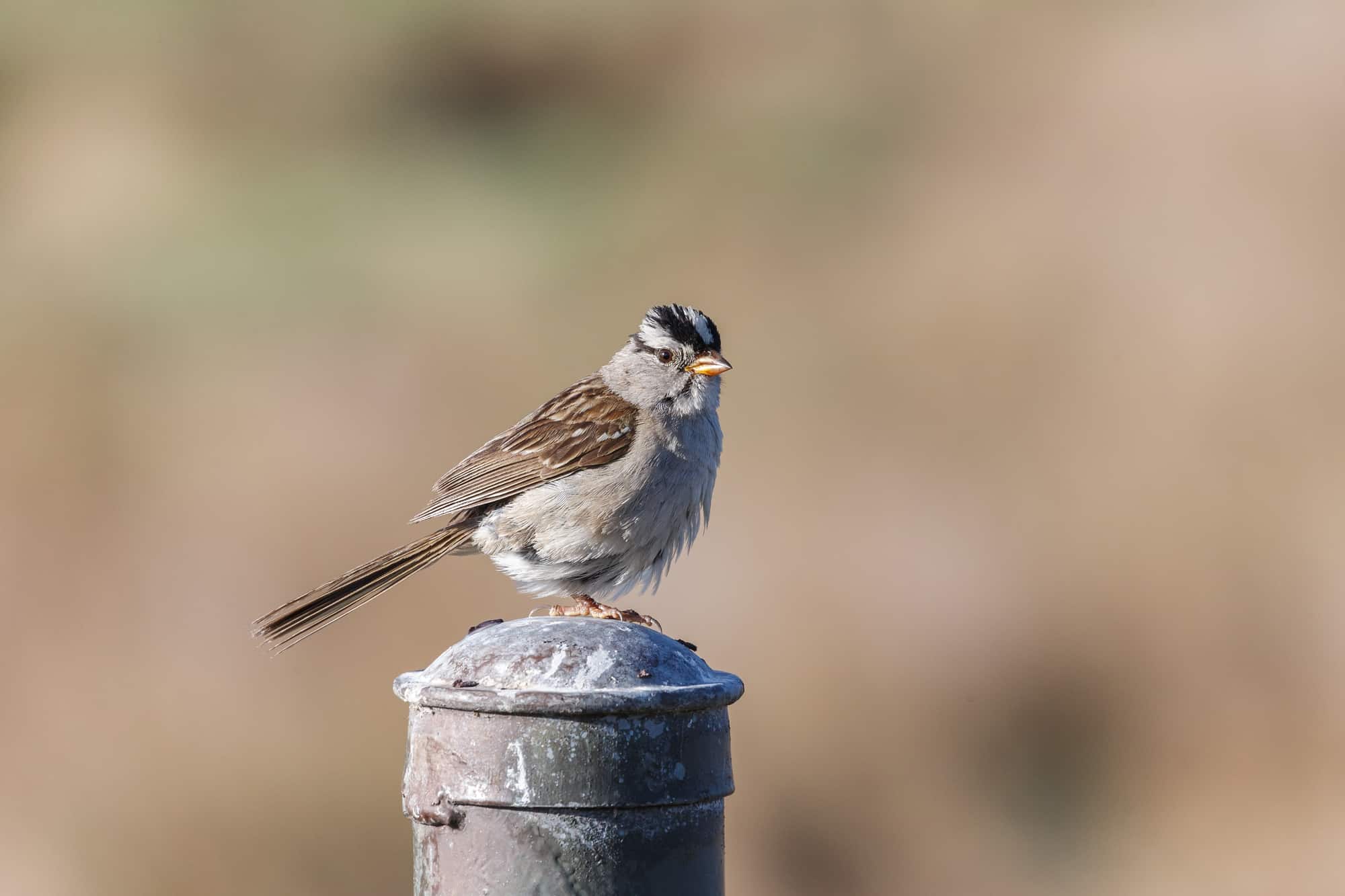
- Scientific Name: Zonotrichia leucophrys
- Length: 5.9-6.3 in (15-16 cm)
- Weight: 0.9-1.0 oz (25-28 g)
- Wingspan: 8.3-9.4 in (21-24 cm)
White-crowned sparrows have an enormous migratory range that spans from Central America to the Arctic Circle.
New Mexico is usually just a wintering ground for these birds when huge numbers of them make them a daily sighting here.
Small populations also remain in the mountainous northern part of the state for breeding too, forming nests on or near the ground from a vast array of materials.
White-crowned sparrows are easy to recognize by the black and white stripes on their crowns, and bright yellow bills.
House Sparrow

- Scientific Name: Passer domesticus
- Length: 5.9-6.7 in (15-17 cm)
- Weight: 0.9-1.1 oz (27-30 g)
- Wingspan: 7.5-9.8 in (19-25 cm)
House sparrows are not native to New Mexico, or any other state of America. They were brought to the US by European settlers in the mid-19th century for pest control but soon colonized the entire country.
It’s ironic then, that some ornithologists now consider the house sparrow a pest in America! These assertive birds are quite capable of dominating the nesting sites of native species.
Seen year-round in the vicinity of human habitation, house sparrows are sedentary birds whose large flocks can empty your bird feeder in minutes!
Chipping Sparrow
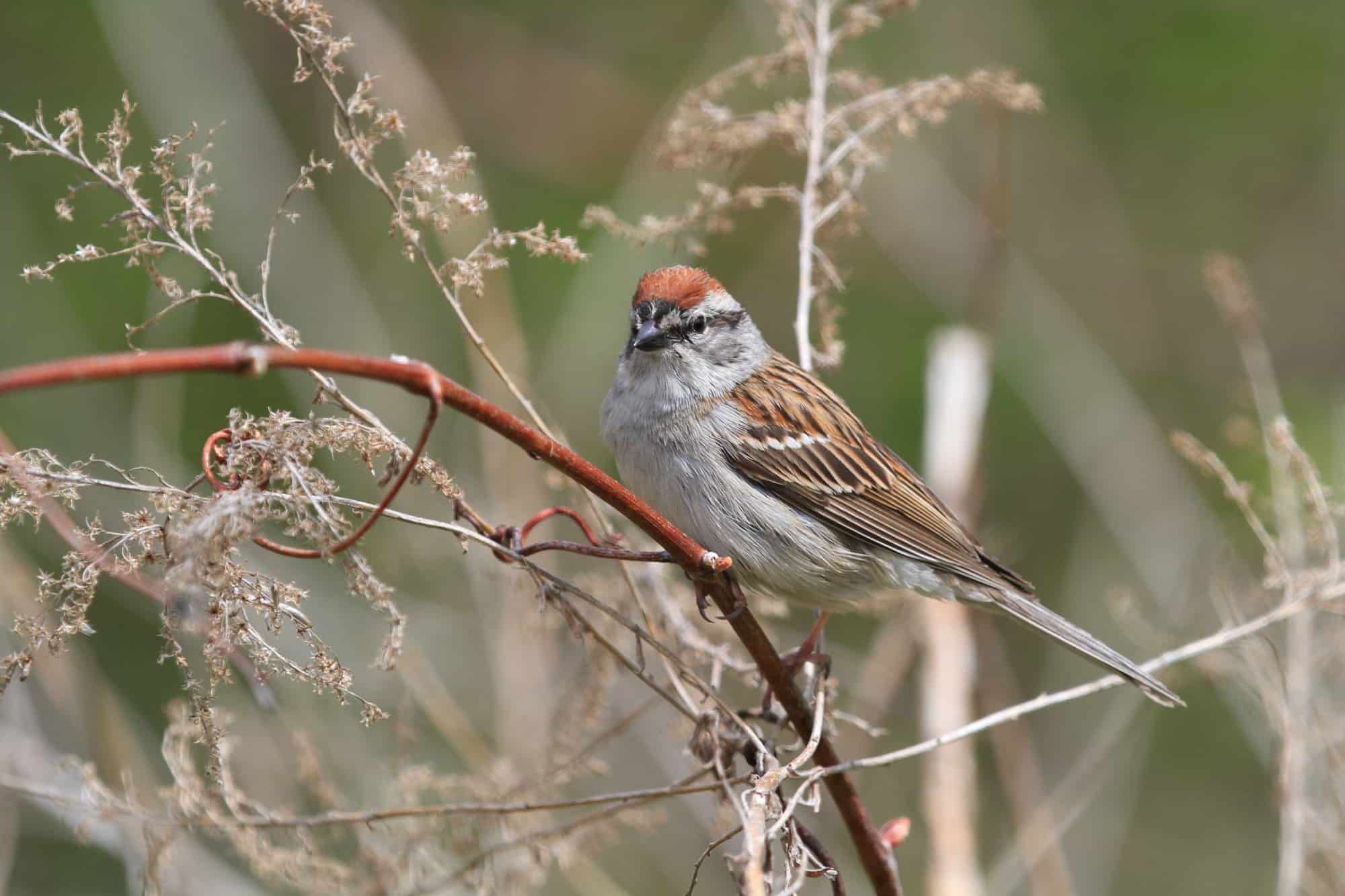
- Scientific Name: Spizella passerina
- Length: 4.7-5.9 in (12-15 cm)
- Weight: 0.4-0.6 oz (11-16 g)
- Wingspan: 8.3 in (21 cm)
Chipping sparrows are a fairly rare sight in New Mexico during winter and a common sight during the summer nesting season.
It’s during the spring and autumn migrations, though, that the skies are filled with these noisy birds, as they pass through the state on their way to and from their southerly wintering grounds.
The rusty crown and black eye line of this medium-sized sparrow make them easy to recognize. When nesting, these birds lay up to 7 eggs and have up to 3 broods during the year. No wonder they’re so common!
Canyon Towhee
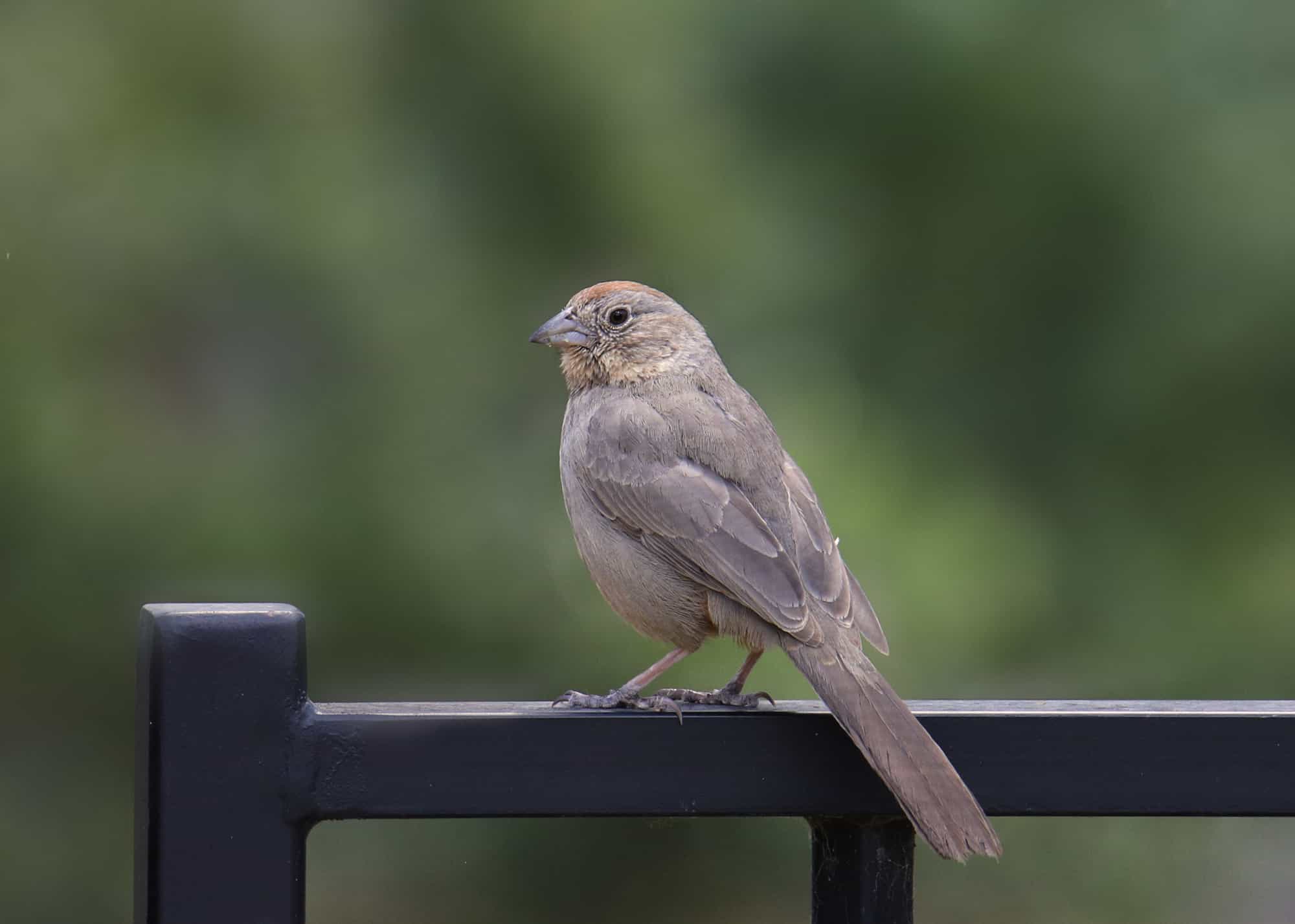
- Scientific Name: Melozone fusca
- Length: 8.3-9.8 in (21-25 cm)
- Weight: 1.3-1.9 oz (37-53 g)
- Wingspan: 11.5 in (29.21 cm)
Canyon towhees are very similar-looking to California towhees, but for identification purposes, it’s lucky that they share very little overlap with their near-relatives.
One of the largest sparrows on our list, canyon towhees have a wingspan of almost a foot across. Other than their sheer size, these native birds can be identified by their loud, two-toned whistling call.
Canyon towhees remain in New Mexico year-round, and time their nesting for when the desert rains are arriving, to ensure a plentiful supply of food for their young.
Song Sparrow

- Scientific Name: Melospiza melodia
- Length: 4.7-6.7 in (12-17 cm)
- Weight: 0.4-1.9 oz (12-53 g)
- Wingspan: 7.1-9.4 in (18-24 cm)
Although they’re not easy to identify by sight, song sparrows are easily recognized by their constant call.
But while song sparrows are one of the noisiest of all sparrows, they’re not necessarily the most tuneful! Scientists have discovered that these migratory birds make different sounds depending on whether they’re in the towns or the countryside!
A frequent sighting in New Mexico during the winter, you can attract these common birds to your backyard feeder by offering them black oil sunflower seeds and fruiting shrubs. A few also remain to breed in the state during summer.
Lark Sparrow
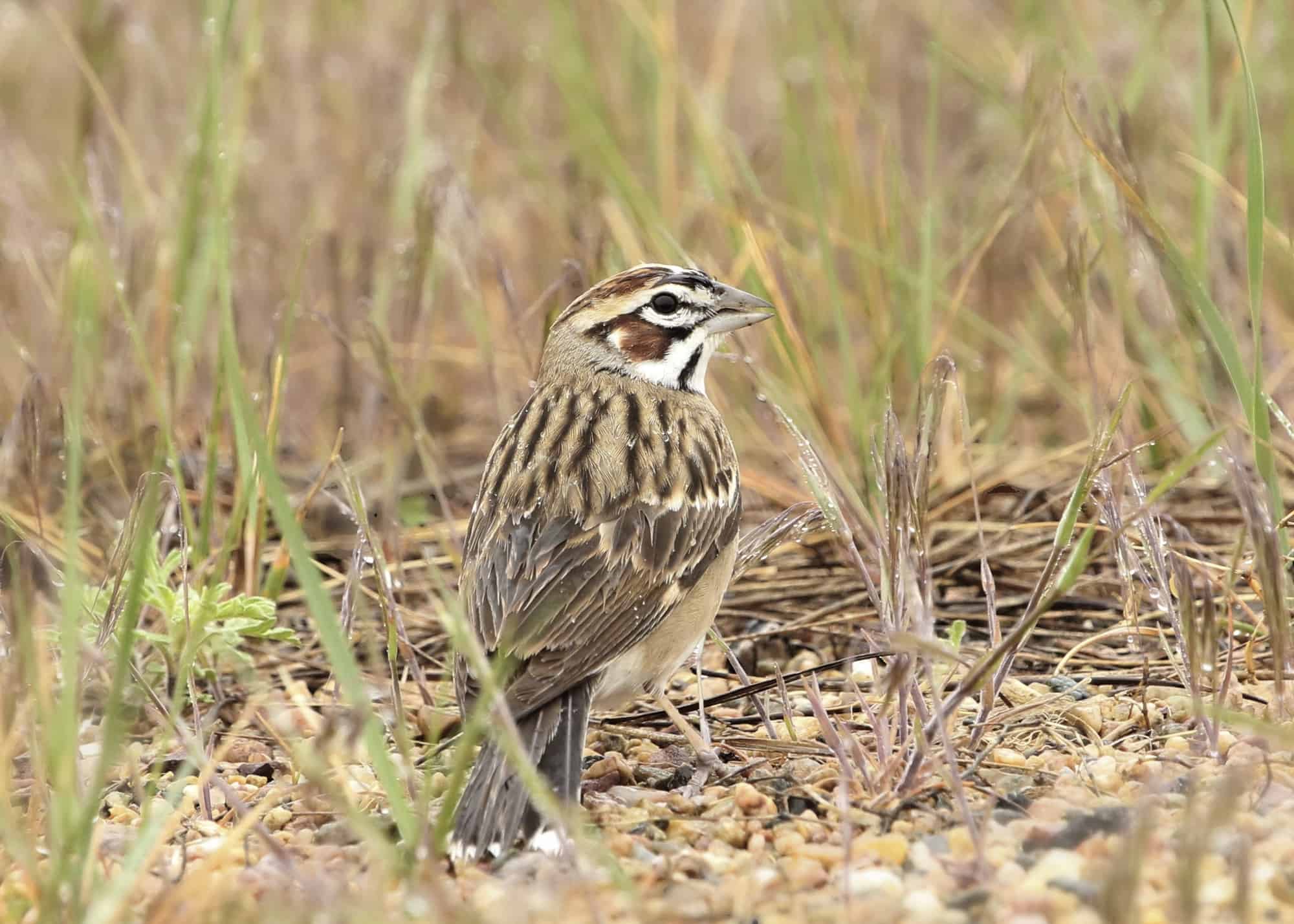
- Scientific Name: Chondestes grammacus
- Length: 5.9-6.7 in (15-17 cm)
- Weight: 0.8-1.2 oz (24-33 g)
- Wingspan: 11.0 in (28 cm)
New Mexico sits at the mid-point of the lark sparrow’s breeding and wintering grounds. So while you will see them all year round on the southern fringes of the state, you’ll only see them in the north during the summer months.
With its bright white chest and dark brown and white striped head, the lark sparrow is fairly easy to recognize. They prefer to spend their time in grasslands, with a few trees and scattered shrubs.
Black-throated Sparrow

- Scientific Name: Amphispiza bilineata
- Length: 4.7-5.5 in (12-14 cm)
- Weight: 0.4-0.5 oz (11-15 g)
- Wingspan: 7.7 in (19.5 cm)
One of the easiest sparrows to identify, the black-throated sparrow has not only a black neck but also a bold black mask on the face between two white stripes.
These tiny sparrows of the southwestern states enjoy life in the desert and remain in Southern New Mexico all year round, with regional populations nesting further north too.
Green-tailed Towhee
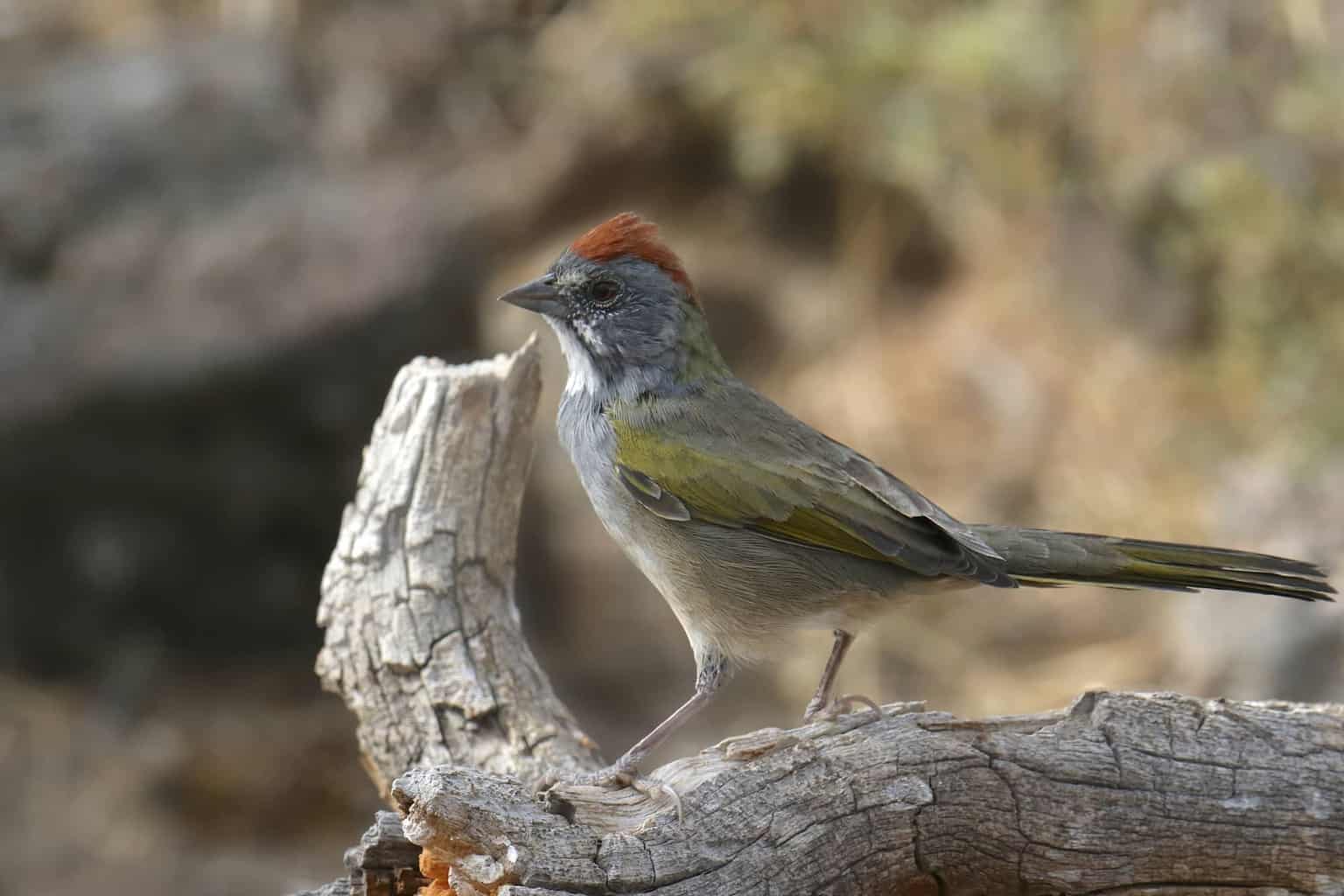
- Scientific Name: Pipilo chlorurus
- Length: 7.25 in (18.4 cm)
- Weight: 0.8-1.4 oz (21.5-39.4 g)
- Wingspan: 9.5-10 inches (23-25cm)
Green-tailed towhees are gorgeous-looking birds of the western mountains. Their olive green-tinted wing and tail feathers, and their rusty crested crowns make them quite different from any other sparrow in our list.
The best place to see green-tailed towhees is among low shrubs in fairly open landscapes. This bird’s bold whistling trills and cat-like mews may give its presence away even when it remains hidden.
Savannah Sparrow
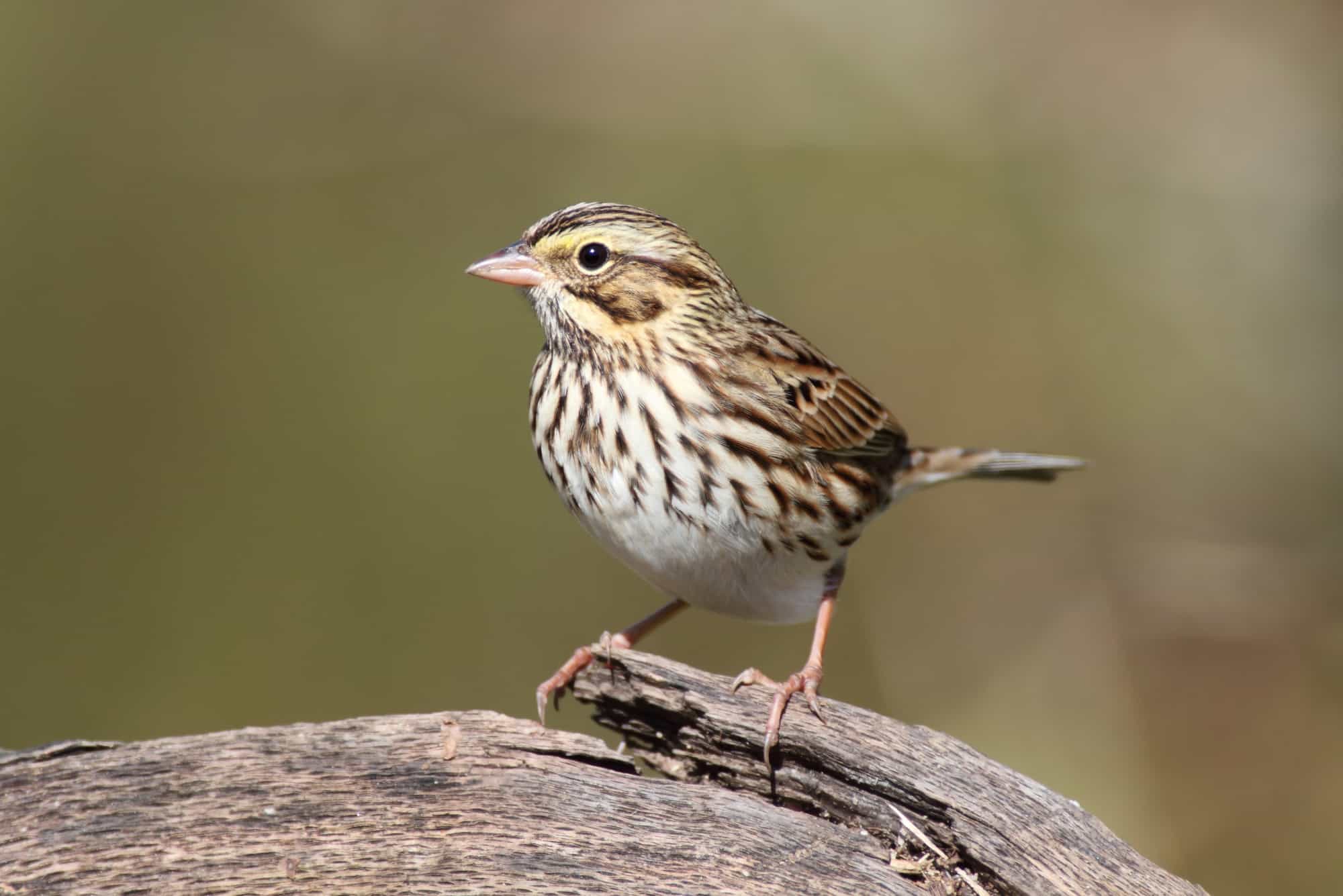
- Scientific Name: Passerculus sandwichensis
- Length: 4.3-5.9 in (11-15 cm)
- Weight: 0.5-1.0 oz (15-28 g)
- Wingspan: 7.9-8.7 in (20-22 cm)
Savannah sparrows are not the easiest of sparrows to identify from a distance, but closer inspection will reveal their trademark yellow-tinted facial feathers.
A bird of the open country, you’re unlikely to see Savannah sparrows near urban environments or in your backyard. They begin to arrive in New Mexico in the early autumn and return to their northerly nesting grounds in March and April.
Sadly, Savannah sparrows are on the IUCN list of near-threatened bird species. Even if they are still numerous and widespread, ornithologists are concerned about the effects of habitat loss on this bird of the wild country.
Rufous-crowned Sparrow
- Scientific Name: Aimophila ruficeps
- Length: 5.9-6.3 in (15-16 cm)
- Weight: 0.6-0.7 oz (16-21 g)
- Wingspan: 7.5-7.8 inches
Rufous-crowned sparrows are sometimes called ‘rock sparrows’, an apt name for a bird that prefers to spend its time in rocky, brushy parts of the Southwestern United States and Mexico.
These small sparrows don’t migrate, and can only be found in localized populations in New Mexico where they can be identified by, well, their rufous crowns! Their noisy, ‘squeaky wheel’ style of song in spring is also a great way to locate them.
Cassin’s Sparrow
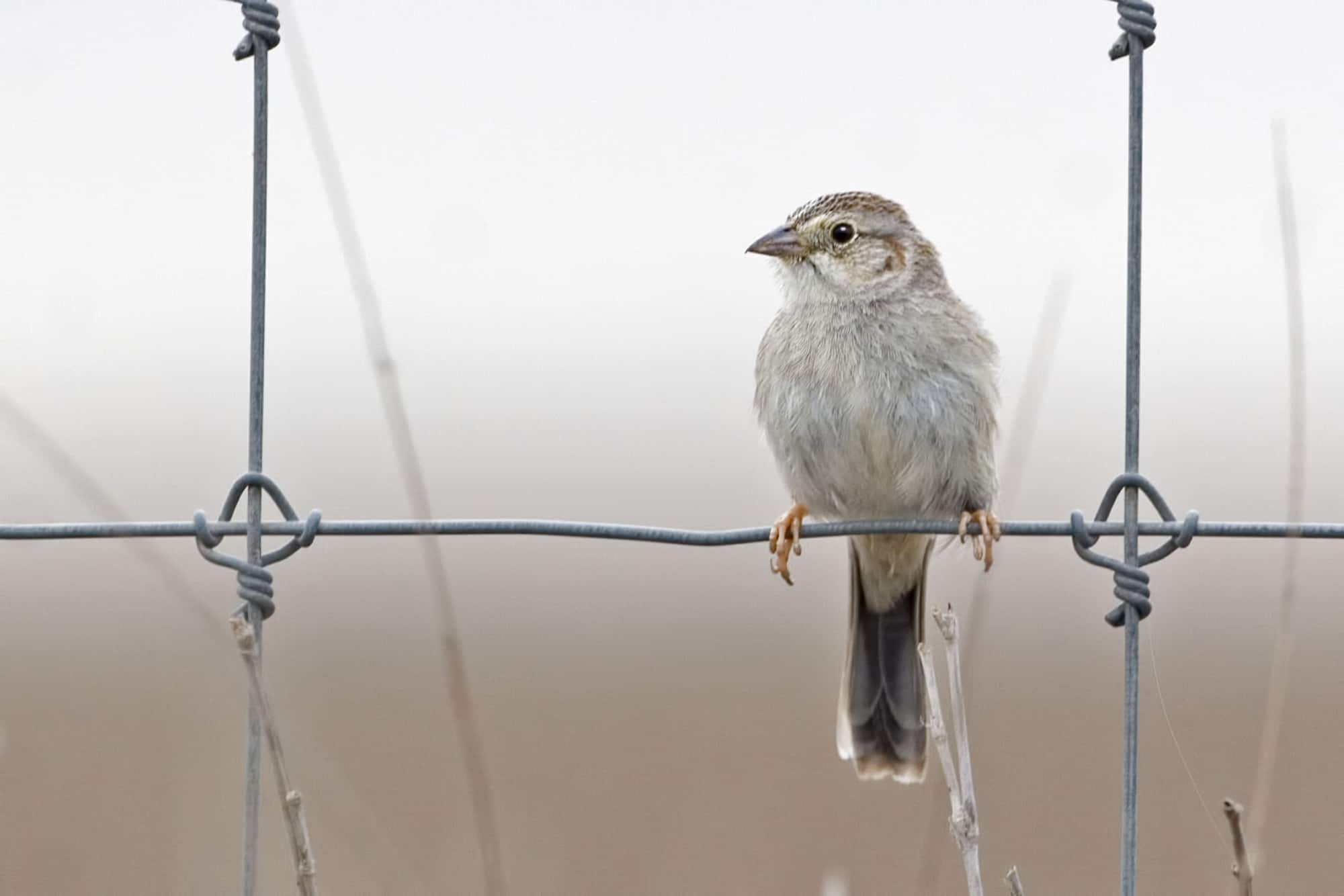
- Scientific Name: Peucaea cassinii
- Length: 6 in (15 cm)
- Weight: 0.7 oz (20 g)
- Wingspan: 9 in (23 cm)
Sightings of Cassin’s sparrows are only occasionally reported in the south of New Mexico during winter, but that could be partly to do with how difficult it is to identify this bird.
Yet, while its gray and brown plumage is unremarkable, you might have more luck identifying one by its unique song. The drawn-out, sharp, metallic-sounding whistles and occasional trills will sometimes give away this bird’s presence in the semi-arid environments that they prefer.
These medium-sized sparrows can also be identified by their intriguing tunnel-like nests, sometimes among cacti.
White-throated Sparrow
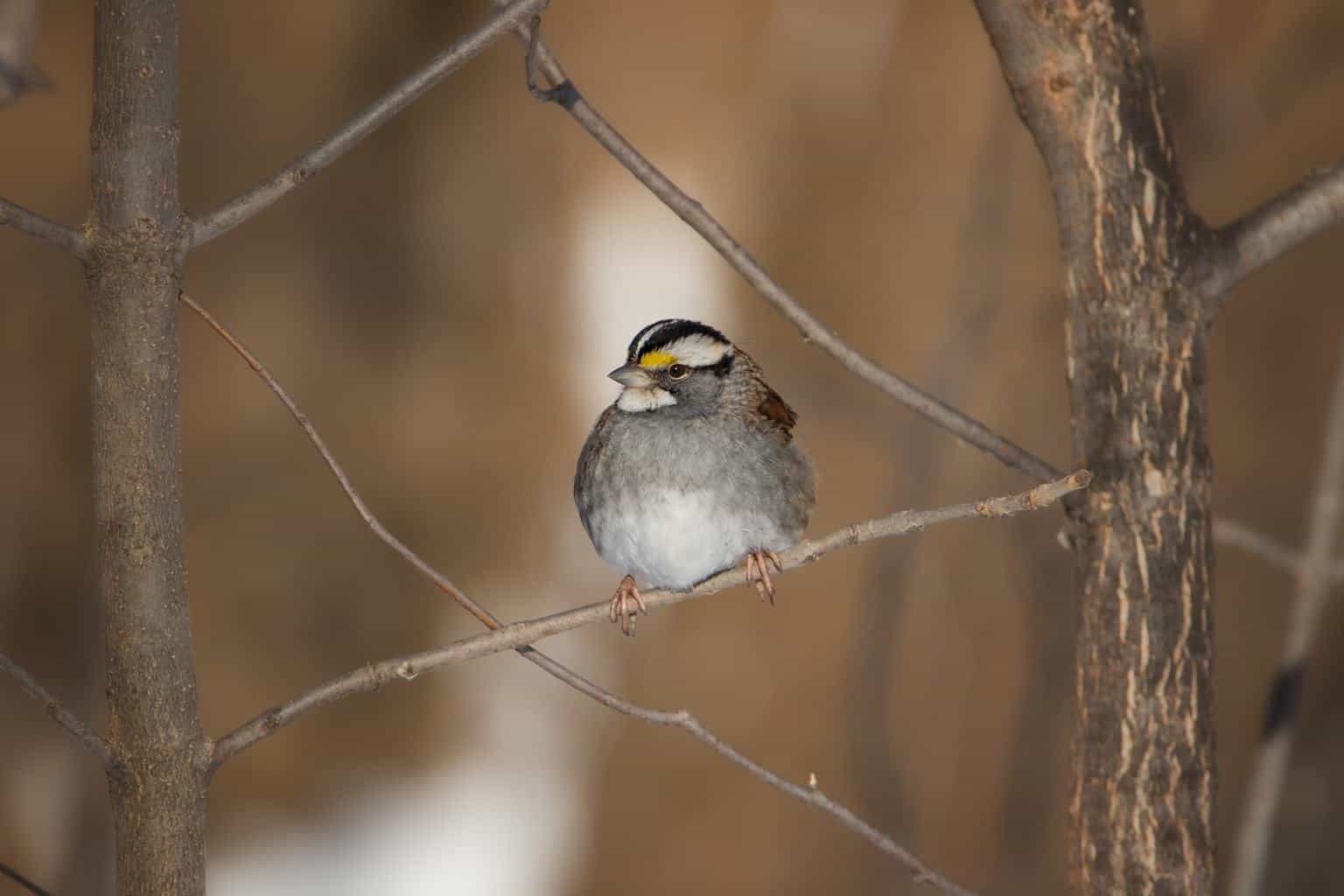
- Scientific Name: Zonotrichia albicollis
- Length: 6.3-7.1 in (16-18 cm)
- Weight: 0.8-1.1 oz (22-32 g)
- Wingspan: 7.9-9.1 in (20-23 cm)
The black and white striped crown, white throat, and yellow eyebrows make the white-throated sparrow fairly easy to recognize.
While these beautiful birds are a common sighting in both more eastern states and the west coast, they make a relatively rare sight in New Mexico, where your only chance of seeing them is in the southern half of the state during the winter months.
Sagebrush Sparrow
- Scientific Name: Artemisiospiza nevadensis
- Length: 6.25 in – 16 cm
- Weight: 0.7 oz – 20 g
- Wingspan: 8-8.5 inches (20-21 cm)
Until 2013, the sagebrush sparrow was thought to be the same species as Bell’s sparrow. Genetic analysis revealed the species as unique and so their common and Latin names were both revised.
The sagebrush sparrow’s common name does indeed describe its favored habitat, but this bird can also be found among saltbush, chamise, and various other low-growing shrubs in arid landscapes.
While populations are currently stable, the preservation of sparse scrubland will be essential for this species to prosper for years to come.
Black-chinned Sparrow
- Scientific Name: Spizella atrogularis
- Length: 5.5-6 inches (15 cm)
- Weight: 0.4-0.5 oz (11-13 g)
- Wingspan: 9 inches (23 cm)
The name of this tiny sparrow is only vaguely appropriate to the male of this species since the female doesn’t sport a black chin at all. In males, jet-black feathers are found not just on the chin, but above the bill as well.
The black-chinned sparrow is native to the Southwestern United States and Central America and tends to spend the breeding season more in the northern part of New Mexico, but a few overwinter in the south, too.
Swamp Sparrow
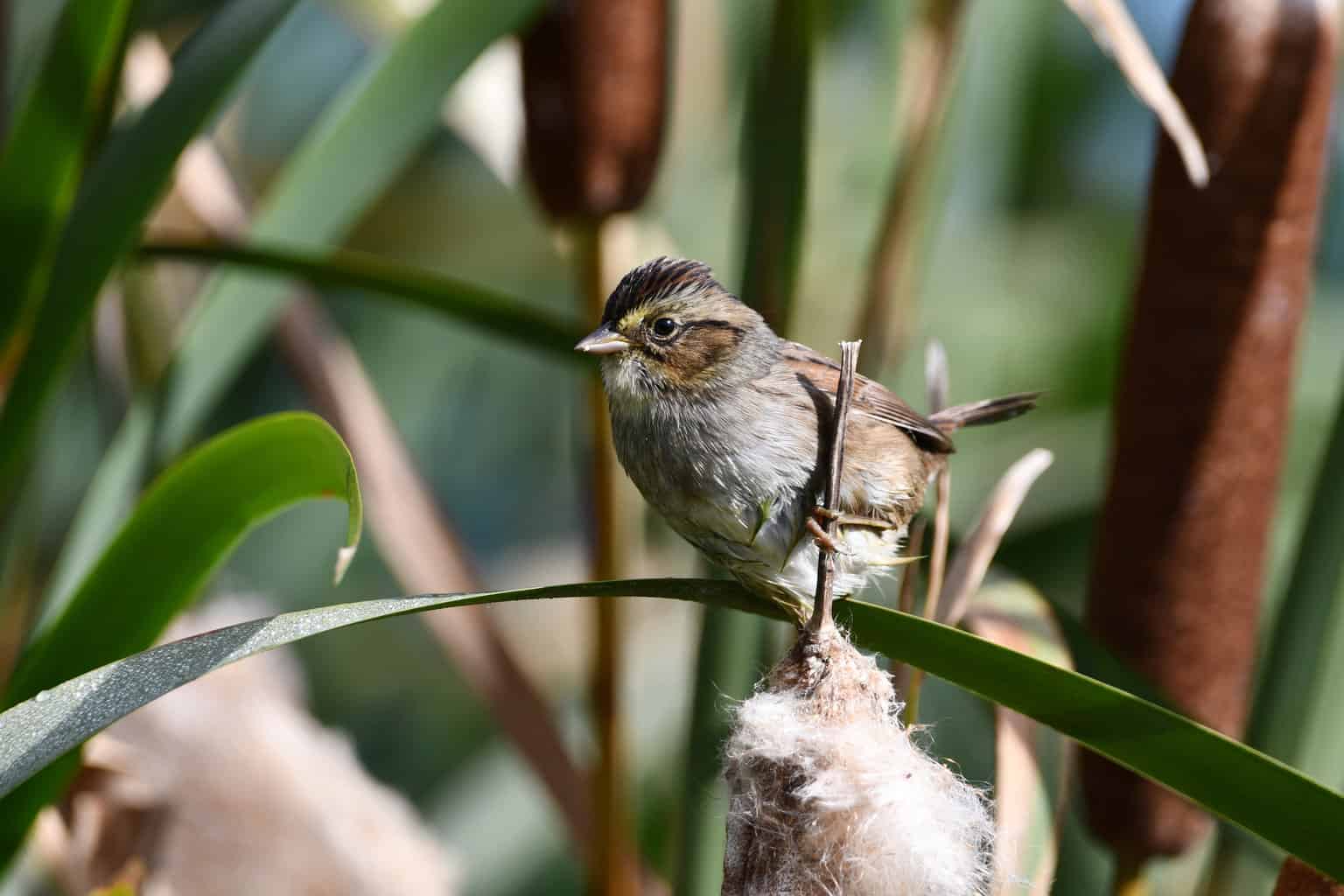
- Scientific Name: Melospiza georgiana
- Length: 4.7-5.9 in (12-15 cm)
- Weight: 0.5-0.8 oz (15-23 g)
- Wingspan: 7.1-7.5 in (18-19 cm)
The tiny swamp sparrow is only an occasional resident in New Mexico, with most of them being seen passing through the state on their spring and fall migration routes.
As their name suggests, these birds prefer wetland habitats such as bogs and marshes. In dry states like New Mexico, they can be attracted to backyards by offering them a garden pond or bird bath – a valuable contribution for many other sparrow species here, too.
Harris’s Sparrow
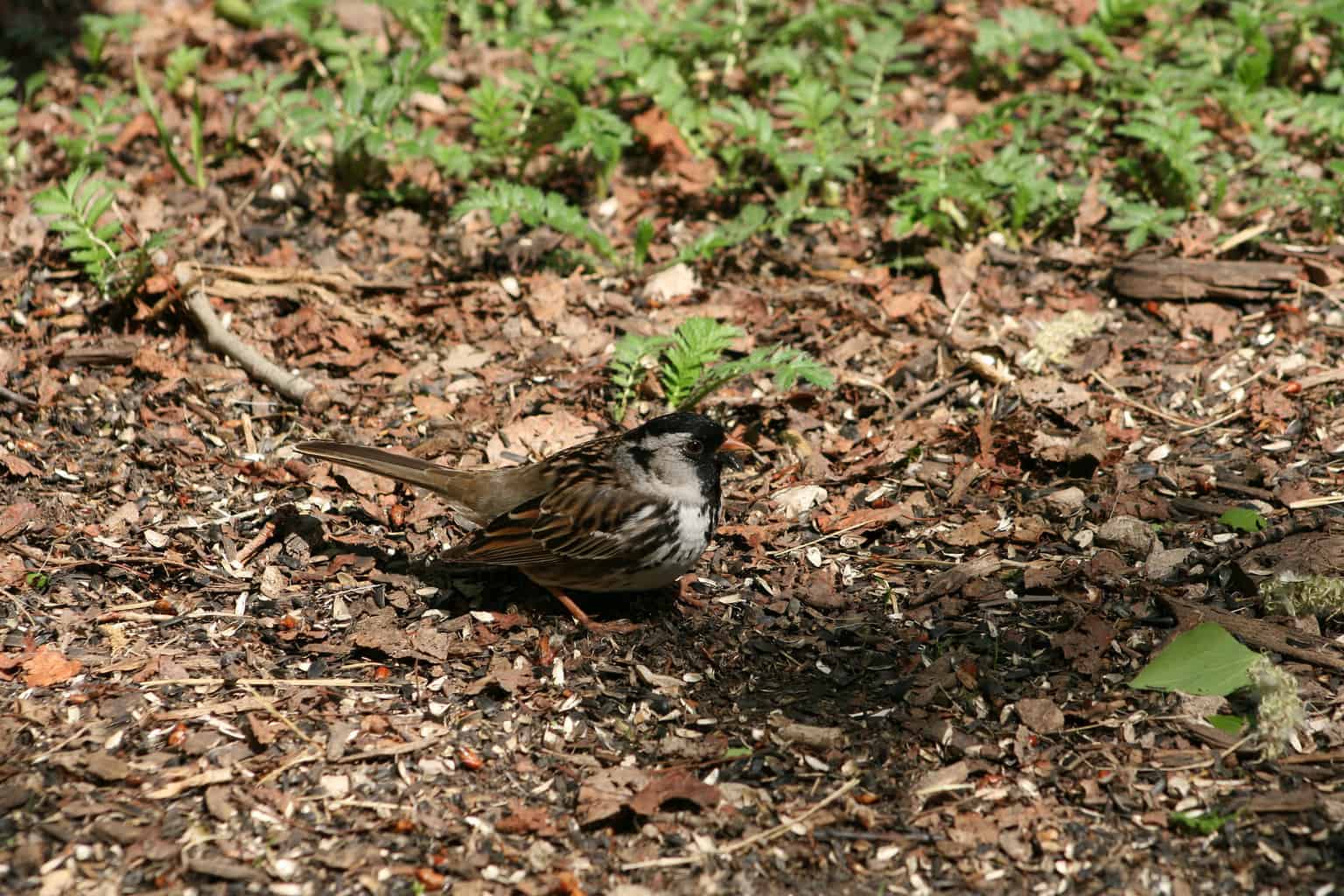
- Scientific Name: Zonotrichia querula
- Length: 6.7-7.9 in (17-20 cm)
- Weight: 0.9-1.7 oz (26-49 g)
- Wingspan: 10.6 in (27 cm)
Listening out for the rich, squeaky call of the Harris sparrow is a good way to track down this species, which makes an occasional appearance on the eastern side of New Mexico.
This large sparrow which breeds exclusively in Canada is a winter resident in the central southern United States but will sometimes remain here for most of the spring when you can hear its trademark simple song.
The Harris sparrow is on the IUCN list of near-threatened birds, perhaps owing to the changing ecology of its boreal forest breeding grounds.
Grasshopper Sparrow
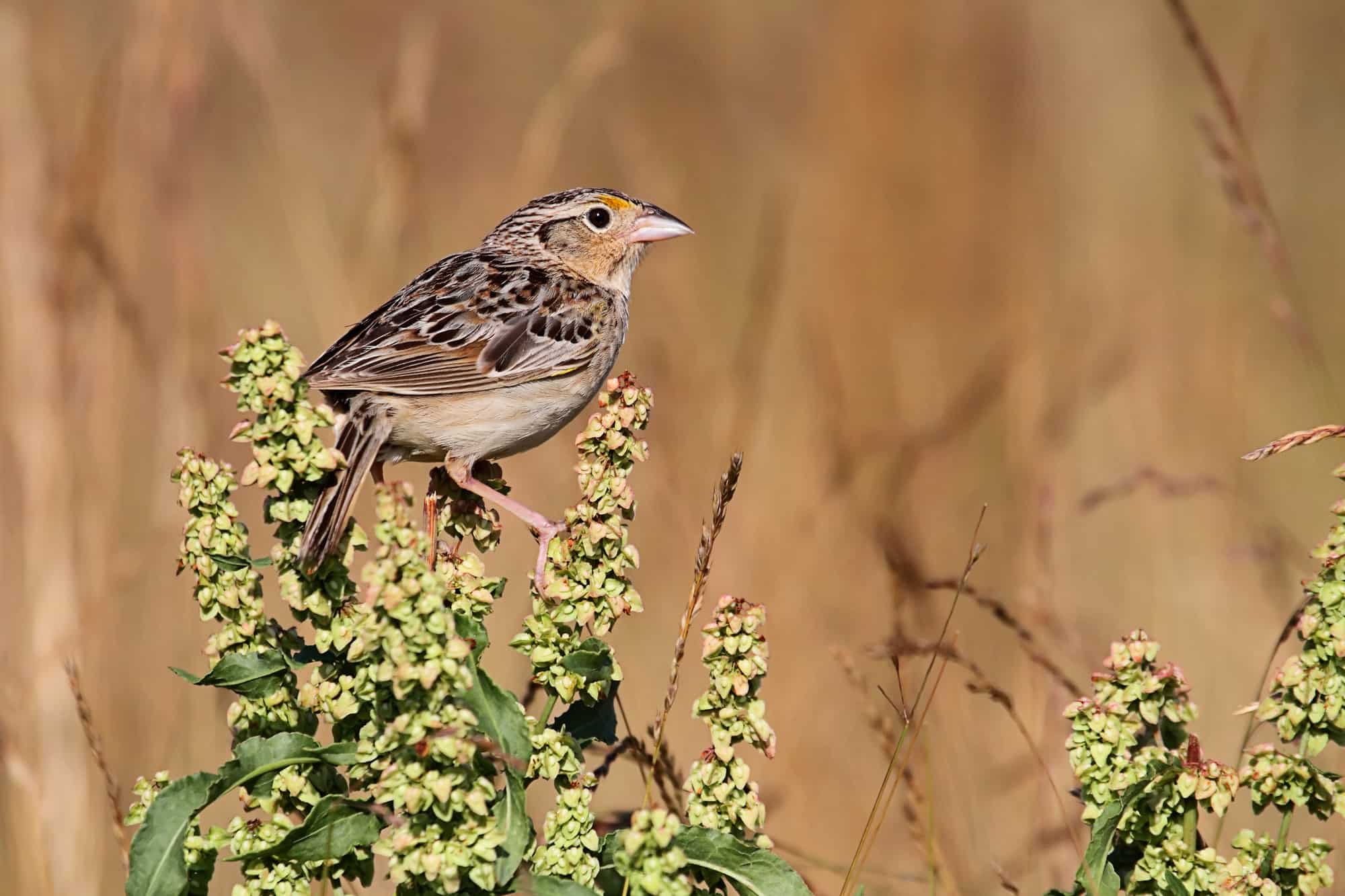
- Scientific Name: Ammodramus savannarum
- Length: 4.3-4.5 in (10.8-11.5 cm)
- Weight: 0.5-0.7 oz (14-20 g)
- Wingspan: 7.9 in (20 cm)
The grasshopper sparrow not only sounds like a grasshopper but loves to eat them, too! This grassland bird’s quiet song is easy to mistake for a chirping insect, and its diminutive size and speckled body make it very difficult to spot.
Its discreet nature, as well as its small population in New Mexico, make it a rare sighting in the state.
American Tree Sparrow
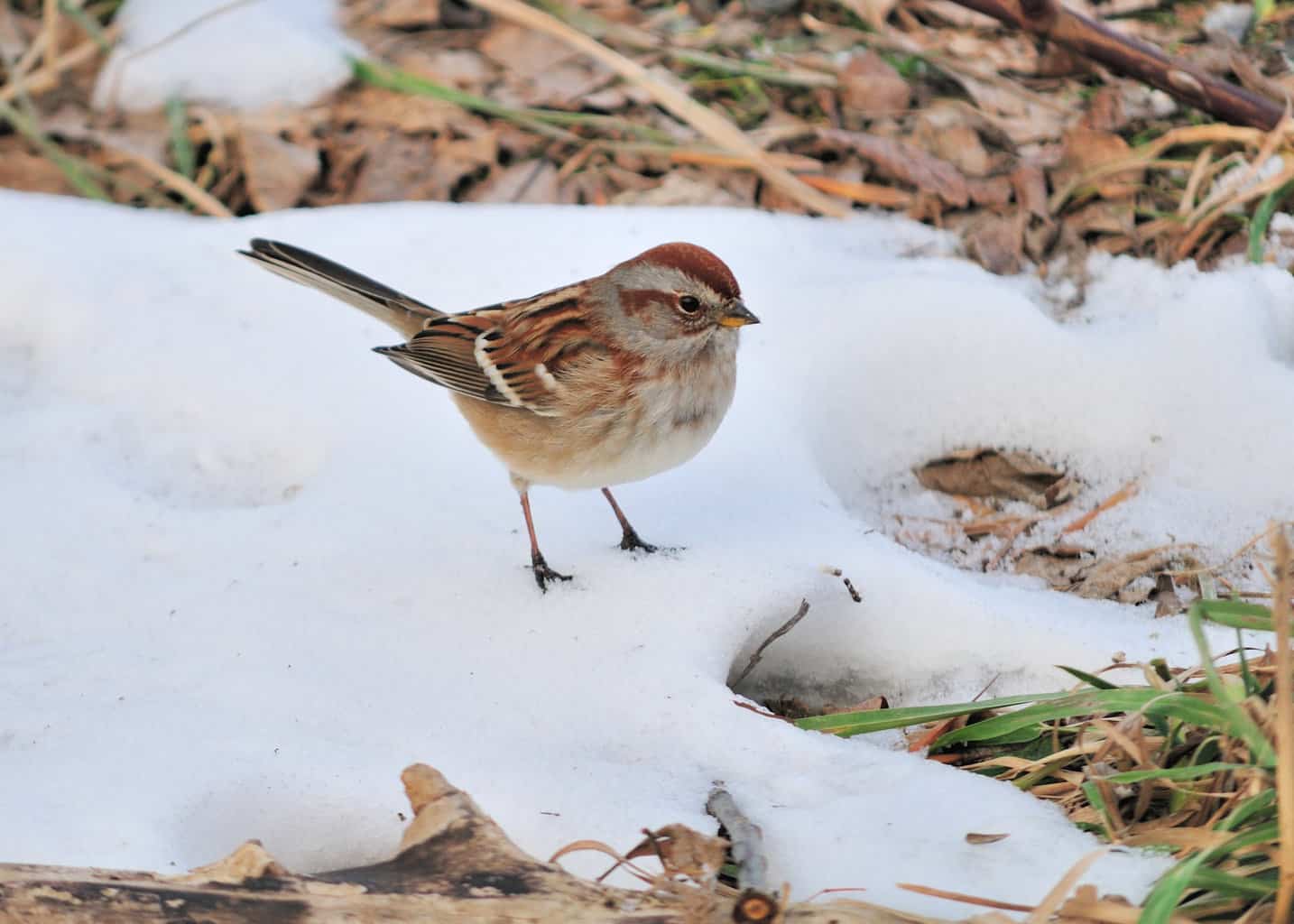
- Scientific Name: Spizelloides arborea
- Length: 5.5 in (14 cm)
- Weight: 0.5-1.0 oz (13-28 g)
- Wingspan: 9.4 in (24 cm)
American tree sparrows have an impressive migratory range that extends well into the arctic circle. Since this bird breeds in tundra landscapes that are devoid of trees, you might wonder how it got its name!
The truth is that these beautiful sparrows were named by European settlers who simply felt that this bird resembled their native tree sparrow. In New Mexico, you’re more likely to find these medium-large sparrows hopping around near the ground or in low shrubs than in trees.
Some That Got Away!
New Mexico boasts a huge diversity of sparrow species, but some of them are so rare here that you’d be very lucky to see them.
Sparrows that will occasionally take up residence in certain parts of New Mexico include the golden-crowned sparrow, field sparrow, Abert’s towhee, Botteri’s sparrow, Baird’s sparrow, and the yellow-eyed junco.
Sparrows that don’t normally stick around in the state but simply pass through on their autumn and spring migrations include Lincoln’s sparrows, Brewer’s sparrows, fox sparrows, clay-colored sparrows, lark bunting, and vesper sparrows.
Conclusion
New Mexico has a wealth of sparrow species that can be spotted by bird watchers around the year. From the tiniest swamp sparrows seeking out the sparse wetlands, to the chunky canyon towhee in the arid valleys, you can discover a diverse array of sparrows in this rich and varied landscape.
Besides sparrows, there are more than 500 other species of bird in New Mexico, and some of them are very dazzling indeed!
To find out more about scarlet tanagers, red-shouldered hawks, and Berylline hummingbirds, don’t miss our essential guide to 25 of the most stunning birds in the land of enchantment.

